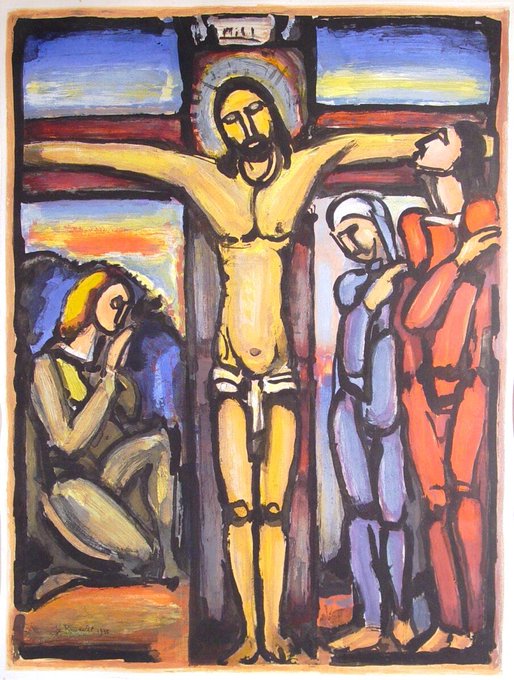Thread: I have a special Valentine’s offer on my work with two artworks for the price of one with free shipping.
Charming, colourful, symbolic in meaning and emotive in its expression, the work of Robert Bohan ignites the inner child within us all - Harpers Galleria, New York
By 1937 he was exhibiting in the US as well as other European cities. Laquais (1936-8), Crucifixion (1936), Italian Woman (1938) & The Three Judges (c1938)
Rouault met Matisse who inspired him with colour & he was influenced by his Fauvism. Two Nudes (1906), Nude with Raised Arms (1906), The Sirens (1906-8) & Peasant with Double Sack (1910-9)
Honorary Degree (1938), January (1938), December Afternoon (1941) & the Doctor (1940). Wood was happy to mock himself at times but must have found the pressures & repression of his sexuality challenging. He used that emotion to chart the land he had a great love for
Daumier went almost blind in 1873 which put paid to his art. A Box at the Theatre (c1865), Don Quixote Reading (c1865), Orchestra Stalls (c1865) & Lunch in the Country (1868). His work is immensely enjoyable.
In his late works his subjects achieve a monumental form & remain memorable in the mind. The Laundress (c1860), A Famous Motive (c1862), Third Class Carriage (c1863) & the Omnibus (1864)
If one theme united his artwork it is the idea of the struggle. Daumier’s leitmotif was always the fight for justice. The Watering Place (c1855), Two Lawyers (c1855), Orchestra Seat (c1856) & The Haulier of a Boat (c1856)
His battle shows the Roman helmeted neoclassical artist fighting with the waistcoated Romantic/Naturalistic Artist. The Wrestlers (c1852), Battle of the (Art) Schools (1855), Don Quixote (c1855) & In Church (1855-7)
The pathos of Christ condemned stands in dramatic contrast with his image of a tyrant king leading by fear. Women running from Satyrs (1850), Ecce Homo (c1851), The King Continues to Reign with Order (1851) & Bathers (c1852)
His strength was being able to move from the specific of a laundress’ struggle to the general understanding of the rebellious French people. Bust of a Woman (c1850-5), Don Quixote (c1850), The Burden (1850-3) & the Destruction of Sodom (c1850)









































